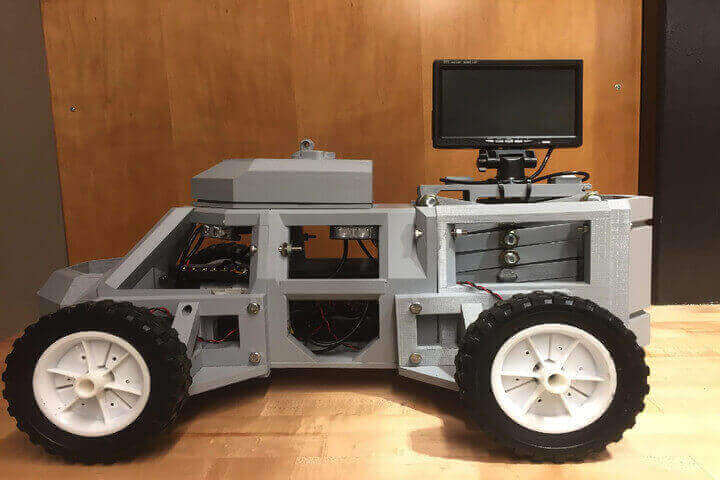Students from Duke University have designed a robot, called Sentinel, to help police officers perform traffic stops and keep everyone safe.
Designing a robot to make sure both police officers and drivers are safe seems like a pretty great use of 3D printing. Chris Reyes, Ph.D. candidate and Vaibhav Tadepalli, senior at Duke University, are behind the robot design.
The students met while working in the same lab back in 2014. They came up with the idea of Sentinel in 2016. It is a robot response to some notoriously violent interactions between police and drivers. They explain in the video below.
Tadepalli explains:
“We looked at each other and said, ‘There’s got to be a better way to do this because this is clearly a problem. There needs to be a safer alternative that allows everyone to walk away alive.'”
Sentinel can drive itself to a stopped car. It then lifts a screen up to the window and initiates a video chat with the police officer who is parked behind. The video chat still gives the police officer an 180-degree view into the car but keeps them at a safe distance.
Thanks to the wide-angle camera, drivers can hold up their license and ID which Sentinel can scan. This information is then sent to the officer’s dashboard computer.
Reyes explains: “We’re making it very secure so that none of the information is saved or stored on the robot, and everything is sent straight to the cop’s computer for processing.”
3D Printing Keeps Sentinel Costs Down
It’s important to note that the robot just a tool for safer communication. It does not have any artificial intelligence or makes decisions. Reyes explains: “We’re not trying to take a job away, we just want to make it easier and safer for the person who does that job.”
Reyes and Tadepalli have been working at the Duke Innovation Co-Lab to design and 3D print most of the parts for the robot. 3D printing helped them to keep costs down. The duo hopes to offer Sentinel at half the price of average police robots, approximating it will cost around $10,000.
“We want to keep costs low to put Sentinel on as many vehicles as we possibly can, to make the impact as big as we possibly can,” Tadepalli said.
The duo received a grant from the Innovation Co-Lab which is being used to give the robot new capabilities. If a sensor array is added, it might even be able to detect explosives, alcohol, and marijuana. As well as this, Tadepalli and Reyes want to add thermal imaging software too.
They are also now through to the second round of the Duke Startup Challenge. It’s hoped that the robot will be ready for use by January 2018. Tadepalli explains: “We’re passionate about this particular product because we see that if we can get it deployed, we can save lives.”
If you want to help support this project, you can back the duo on Indiegogo. But, be quick as there are just six days left of their campaign.
Source: Duke Chronicle

License: The text of "3D Printed “Sentinel” Robot Keeps Police and Civilians Safe in Traffic Stops" by All3DP is licensed under a Creative Commons Attribution 4.0 International License.